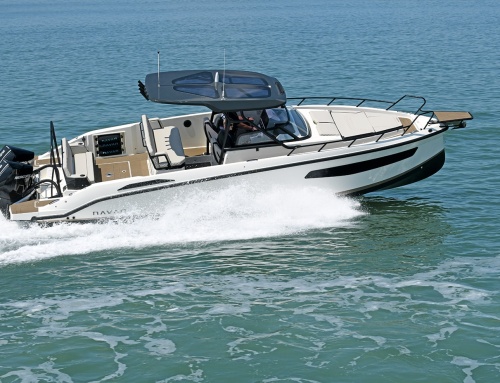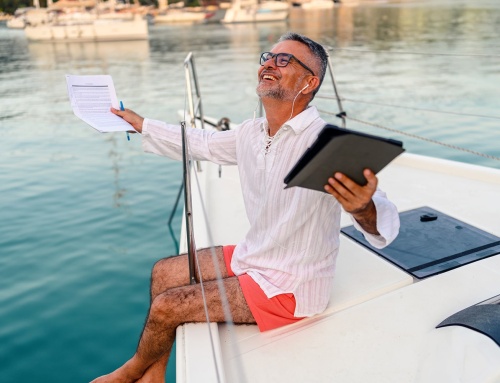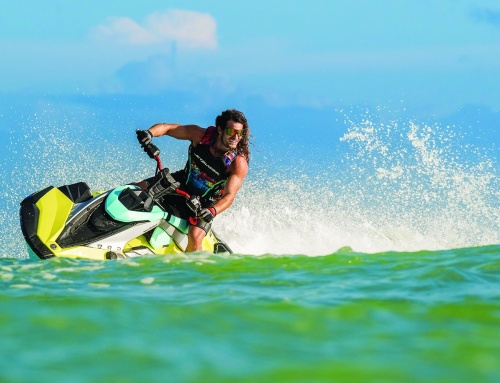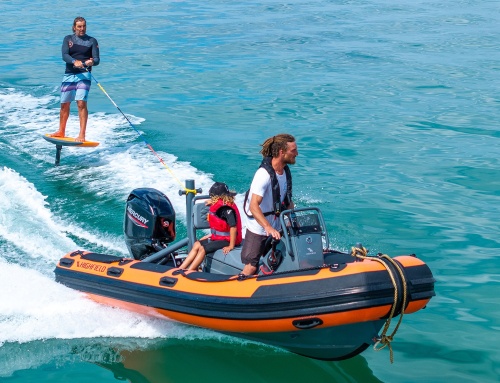The unwilding of Antarctica has become a serious matter.
Climate change, tourism, industrial-scale fishing and krill harvesting – all such factors are playing their part in upsetting the natural balance of one of the planet’s most critical ocean habitats, Antarctica. Giovanna Fasanelli investigates and considers what can be done …
Word of Antarctica’s wondrous beauty has most certainly spread through the travel channels. The chances are you may know someone who has been, is booked to go or wants to go. These days, the austral season may now see over 100,000 tourists (what pandemic?!) clamouring to visit the much-touted pristine wilderness. A third of these are ‘cruise-only’ visitors while the rest make landfall at various locations mainly around the Antarctic peninsula, which is most commonly accessed from Argentina’s southernmost city, Ushuaia. Depending on your budget, the activity menu on offer to the traveller includes visiting wildlife and historical sites, kayaking, ‘polar plunging’, snorkelling, diving, cross-country skiing, heli-skiing, climbing, hiking, paddleboarding, submersible diving and camping. In addition to the legion of summer tourists, among the 76 active research stations spread across Antarctica, thousands of year-round scientists and support staff hustle and bustle all over the place in helicopters, boats, snowmobiles, quad bikes and ‘tractor trains’. Between these two industry sectors, a growing and long-lasting impact on the ‘pristineness’ is being felt, which is requiring close monitoring, perhaps akin to the careful regulation needed of the internal atmosphere of the Louvre – a museum that sees 30,000 visitors a day. Like the Louvre, everything in Antarctica is delicate, highly sensitive to changes in climate and extremely vulnerable to the slightest disturbance.

Tourist getting close © iStock/ Keith Szafranski.

A busy tourist boat tour on Antarctica at Paradise bay. © iStock-cunfek
Double-edged sword
The double-edged sword of research and tourism is at work: cutting-edge science is delivering spectacular insights into countless disciplines while tourism works well to raise funds and promote awareness. But all this activity inadvertently threatens the very beauty and pristine natural heritage that people have come to enjoy and study. The spread of alien organisms such as rodents, plants, insects and fungus brings out many a biologist’s night terrors, while the mere trampling of delicate moss and lichen beds leaves impacts as if they were wet concrete. Ice has been seen to melt significantly faster in areas used by humans as traces of black carbon pollution (smoke and soot) from the combustion of fuel used on vessels, helicopters, planes, vehicles and diesel generators is inadvertently transferred to the surrounding snow, which lowers the albedo (the fraction of light that a surface reflects), allowing greater absorption of solar radiation. A 2022 study published in Nature Communications found that this impact may represent a snow loss of up to 83 tonnes per visitor and 400 tonnes per researcher (for the King George Island study area alone, which holds 700 beds across 11 research stations).

Lemaire Channel Pleneau Island. © G.Fasanelli

A pair of black-browed albatross greeting each other with recognition and bonding rituals, having paired for life.

King penguins and southern elephant seals, Gold Harbour and Cooper Bay, South Georgia © G.Fasanelli.
Another vexing source of pollution defiling the purity of Antarctica’s wilderness is that of meddlesome microplastics (plastic particles < 5mm in diameter), which have found their way into the snow and sea. Airborne polyethylene terephthalate (PET) polymers, mainly in the form of fibres from clothing and equipment, have been detected in snow samples (potentially from as far away as 6,000 kilometres), while waterborne microplastics are turning up in marine sediment around the continent, working their way into intricate food webs. For now, these sources of pollution are intertwined too deeply in everything that happens in and around the continent for there to be much hope of controlling them.

A Southern rockhopper penguin and chick on Bleaker Island in the Falklands. © G.Fasanelli
‘Explore-tation’
The merciless and far-flung wilderness of the Southern Ocean has been unable to deter man’s profit-seeking ambitions – in fact, the bounty found here has attracted hunters like moths to the moon. After the severe depletion of northern hemisphere populations, the sequential hunting of seals, penguins and finally whales around the many subantarctic islands began in the late 1700s and really only came to an end when business’s bottom lines could no longer be met by so few remaining animals. Antarctic fur seals were reduced to a mere few hundred individuals in just 100 years of harvesting, and over a million baleen whales were flensed between 1900 and 1970, by which time eight species were listed as endangered.

Weddell Seal.

Antarctic Fur Seal’s will defend their territories to the death – Salisbury Plain © G.Fasanelli.
Taking the baton from the era of commercial whaling, big-business fishing took to the high seas, and still today, thousands of tonnes of animals are hauled out of the Southern Ocean every year, mined like a seam of coal. It all began when American seafood merchant Lee Lantz discovered the chunky, mild, boneless and easy-to-cook fillets of the Patagonian toothfish (Dissostichus eleginoides) at a Chilean fish market in 1977. After giving the ‘too-ugly-to-eat’ toothfish a marketing makeover, the fish became known to the world as ‘Chilean Seabass’ and the floodgates of global demand burst forth. Around the same time, the New Zealanders opened the Antarctic toothfish fishery; this sister species (Dissostichus mawsoni) was found to occur much closer to the Antarctic continent itself and is equally as dinner-plate desirable. So, the ‘white gold rush’ began, which led to the devastating era of illegal, unregulated and unreported fishing (‘IUU fishing’) in the Southern Ocean. Between the late 1990s and early 2000s, these relatively unfished waters saw a roving plague of over 50 poaching vessels pillage all known toothfish stocks, nearly collapsing certain populations while also drowning countless thousands of seabirds in nets and on baited hooks, and dynamiting and shooting resident killer whale populations. It was a deeply egregious situation that was thankfully reined in by multiple hands, including marine activist organisation Sea Shepherd, which pursued one of the last of the IUU vessels, the Thunder, in a record-breaking high-seas chase that spanned over 10,000 miles of ocean from ice-laden Antarctica to the tropical waters off São Tomé and Príncipe. The legendary story ended with the Thunder’s captain scuttling the ship and its incriminating evidence just before authorities could board.

Gentoo penguins trumpet in the dawn light Gold Harbour and Cooper Bay South Georgia.

Western Rockhopper Penguin fights for survival in the Falkland Islands.
Since those lawless days of high-seas skulduggery and crime syndicate monopoly games, the Southern Ocean fisheries have come under much more careful guard by each individual country stakeholder, and since 1982, administration of the whole fishery has been managed by the Commission for the Conservation of Antarctic Marine Living Resources (CCAMLR), which undertakes continuous studies to assess the health of stocks and how this relates to management policies. Organisations such as the CCAMLR and COLTO (Coalition of Legal Toothfish Operators) have joined forces along with the Marine Stewardship Council (https://www.msc.org/) to make Chilean seabass sustainable – which is just dandy for business. But when one witnesses the gaffing of countless terrified 100-kilogram 50-year-old toothfish dragged up from their deep ocean havens on never-ending longlines, the thought of leaving these leviathans to keep living their long, wild lives certainly plagues the soul.

Chinstrap penguins Half Moon, Yankee Harbour, Fort Point, Hardy Cove.

King penguins Salisbury Plain South Georgia. All © Giovanna Fasanelli

Grytviken is home to Shackleton’s final resting place © G.Fasanelli.

Antarctic krill, Euphausia superba, is a species of krill found in the Antarctic waters of the Southern Ocean. They are a key species in the Antarctic ecosystem. © iStock-Gerald Corsi
Krill in crisis
It’s not just the toothfish that we want, it’s the krill too – the staple menu item of all penguins, seals, whales and fish. Now that innovation has figured out how to keep these inch-long shrimps from crushing each other into a soup when being dragged on deck in fine-mesh nets, or from letting the fluorides in their exoskeletons poison the catch, factory fishing nations like Norway, China and Russia are licking their industrial fishing lips. The majority of the krill catch ends up as fish feed in the aquaculture industry and as ‘chum’ (bait for sport fishing), while there is also a growing interest in the human supplement market as yet another source of omega-3s. Norwegian company Aker Biomarine nets around three-quarters of the annual global catch (415,508 metric tons in 2022) using state-of-the-art supertrawlers, which are vacuuming up an average of 500 tonnes of Antarctic krill (Euphausia superba) per day – an amount that equals the daily intake of approximately 150 humpback whales. This is not the only thing this company has fished: a total of three young humpback whales were accidentally captured and killed in their nets during operations in 2021, and a fourth in 2022. In January this year, activist group Sea Shepherd documented heartbreaking video footage of krill supertrawlers fishing among a large aggregation of feeding whales, literally stealing the food from the hungry giants, virtually in front of their open mouths. Sadly, this footage does not stand in isolation and indicates that this interaction is likely to reflect ‘business as usual’. None of this bodes well, as the fishery lacks crucial regulation while yet more factory ships head to these remote waters to exploit areas that should unequivocally be no-take marine sanctuaries for countless creatures that are trying their best to survive in the face of cataclysmic changes.

Tourists visiting the king penguin and seal colonies at Gold Harbour, South Georgia. © iStock-Andrew Peacock

Tourists photograph a Gentoo Penguin at Gore Videla Station, Paradise Harbour, Antarctic Peninsula. © Sam Edmonds_istockphoto.

Argentinian scientific research station at Esperanza © istock/BDPhoto
Seashore ice is melting
Adding to the ‘krill crisis’ is the tremendous loss of seasonal sea ice upon which the young crustaceans expressly depend – a worrying trend that is believed by many to be at the heart of why global krill populations are in a state of dramatic decline. For Antarctic krill to thrive over the three years it takes to reach breeding age, they need plenty of sea ice that forms early and melts late. In summer, when krill eggs hatch in the deep ocean, they rise to the surface to feed and fatten up before winter. To survive the merciless winters, krill larvae seek out the sea ice, which provides protection from strong currents and big storms as well as offering an essential larder of sea ice algae that grow in cracks and channels underneath. Analysis of the sea ice data around the continent is revealing concerning patterns of record below-average levels – so much so that scientists are referring to the new averages as a ‘regime shift’. The last three years (2022–2024) of minimum ice coverage recorded around the continent represent the lowest three-year average seen in more than four decades. This spells trouble for krill populations that are showing marked declines and distribution shifts, especially in the areas around the Antarctic peninsula and the Weddell Sea, where millions of penguins, seals and whales aggregate expecting to fatten up on these nourishing crustacean swarms – a food source that cannot be easily replaced by anything else. Alarmingly, scientists studying Antarctic fur seals around the subantarctic island of South Georgia are already reporting significantly reduced recruitment rates, which they are attributing to a lack of availability of krill – the seal’s dominant food source – while southern right and humpback whales are also showing signs of weight loss and decreased ability to produce healthy offspring. The ‘tick tock’ of this ecosystem’s clock seems to be getting very loud indeed.

Expedition boat motors into Ushuaia harbour, Tierra del fuego, Argentina © Simon KR/istockphoto

People come off the cruise ship to hike up the Antarctic hill. © iStock/namchetolukla

Collapsing Glacier, Neko Harbor, Antarctica. © Stock/SimonKR
What’s all the fuss about?
Having guided trips to the white continent 11 times now, people always ask me what makes it so special. It’s not one single experience but all the moments in which it takes your breath away, and those moments hit you one after another. It’s the way the wandering albatross lands and approaches its lifelong partner, their bills clacking, held high in a rapturous celebration of kinship and hope. It’s the incredible whiteness, the stirring silence, the freshest of air, the pearly light, the way the towering icebergs – each a wondrous sculpture fashioned by wind and wave – glow in luminescent blues and every hue of the sunset. It’s the utter assault on the senses as thousands of pugnacious, pungent penguins go about their lives around your feet, their adorableness melting away your life’s cynicism. It’s the way the killer whales bow-ride with grace and glee, the way the icy wind tears at your skin without remorse, the way the leopard seal’s delicate, trilling song reflects off the glacier behind it, the smell of the humpback’s seafood-laden breath as it rises at your bow, the way the baby seals are so brave in the face of such mercilessness. It’s the sense of majesty in everything you can see and touch, hinting at what the world once was without humans. It’s the sense of limitlessness, deep presence and eternity that bypasses your mind and grips the soul. Antarctica is what everyone who has seen it says it is – indescribable. But herein lies the undoing of this magic – its allure and resplendence may just be a noose for its own neck. Can we hold onto the purity of the last great wilderness on earth? At this point, it’s feeling more like a hope than a strategy.

The cherry on the top: avian influenza killing thousands!
The deadly H5N1 bird flu virus, originally surfacing in Europe in 2021, has finally reached Antarctica’s shores and scientists are gravely worried. Originally considered a threat just to poultry, this ‘new version’ virus has jumped into wild bird populations and 37 mammal species, including seals and dolphins. Across South America, the virus has already killed tens of thousands of birds, sea lions and elephant seals (especially pups) and has now arrived in the Southern Ocean islands and the Antarctic peninsula – likely transported by scavenging birds such as skuas. Researchers are hurriedly collecting samples from carcasses scattered at penguin-breeding colonies to better understand the virus and what can possibly be done to curb the spread. Little is known at this point about what the extent of the devastation will be, but recruitment levels in the following few years may well see a huge impact as far fewer animals remain to join the breeding seasons. Some scientists are viewing the current wildlife losses as an ‘ecological crisis’ that is exacerbated by the mounting effects of many other human-induced stressors.

Whales are farmers and krill are climate superheroes!
Following the extractive whaling era of the 20th century, krill stocks in the Southern Ocean plummeted by some 80%, which greatly puzzled scientists for decades, as surely without their main predators, krill populations would have exploded, wouldn’t they? The dots were eventually joined by scientists Victor Smetacek and Stephen Nicol, who proposed a theory that whales, through the mighty bounty of their poop, were supplying the phytoplankton (krill food) with essential nutrients, most importantly the limiting nutrient of iron. This magical, fertilising poop can hold 10 million times more iron than the surrounding seawater. When this iron concentrate is released into the upper, sunlit waters of the sea, the phytoplankton have a blooming party. Being plants, as phytoplankton photosynthesise they sequester carbon dioxide from the atmosphere and, upon their death, those that are not consumed take the carbon in their bodies to the bottom of the ocean. The principal grazers of the phytoplankton are the 1-gram, inch-long crustaceans – krill – whose carbon-rich faecal pellets and moulted exoskeletons add to the sinking of carbon into the deep ocean. Researchers estimate that this amount could represent as much as 12 billion tonnes annually. In this way, all the phytoplankton and the nearly half a trillion tonnes of Antarctic krill form part of the great carbon cycle, or ‘biological pump’, that helps regulate our atmosphere. So the long and short of it is: the whales farm the phytoplankton, which feed the krill, and together they all help fight global climate change!

Tourists arrive by cruise ship to visit the penguin colonies © iStock/cascoly
What can be done to protect ocean habitats?
- Limit the number of cruise vessels and annual visitors.
- All visitors and staff to Antarctica should be encouraged to offset not just the carbon they directly produce in getting to the continent but also the rest of their footprint: the carbon involved in manufacturing and producing what they use and consume.
- The use of clean, renewable energies should be phased in for all vessels, vehicles and machinery.
- The impacts of research stations and activities should be kept under strict scrutiny and all possible amendments made to limit pollution sources.
- The krill fishery needs to undergo an immediate and punitive re-evaluation process, including operational restrictions to strongly protect aggregations of feeding wildlife.
- Many more sanctuary and geofenced (no-go) areas on land and in the ocean should be declared that give human-free space to wildlife and critical habitats, leaving highly sensitive areas undisturbed.
- The issue of reducing plastic pollution must remain a top priority around the world as the effects are felt in the farthest, deepest reaches of our biosphere.
Useful links and interesting information
Extinction – Emperor Penguins extinction by 2100?
Polar Journal – The six threats to antarctica
Nature.com – Southern right whales show weight loss
Krill life cycle – Climate change causes decline in krill habitat
Climate.gov – Antarctic sea ice lowest on record
Nasa.gov – Exceptionally low antarctic sea ice










